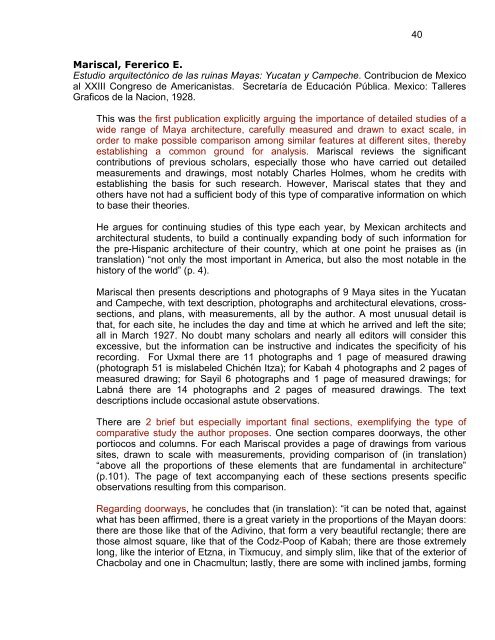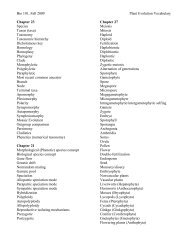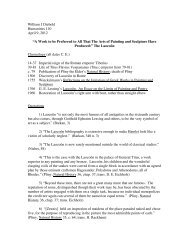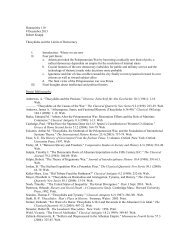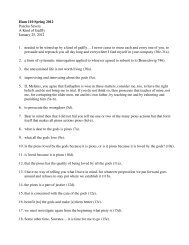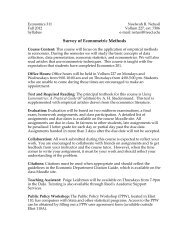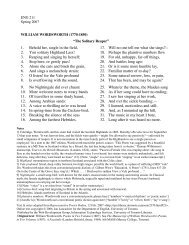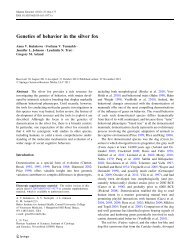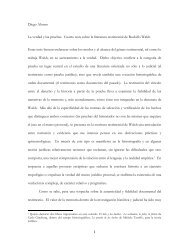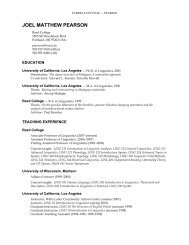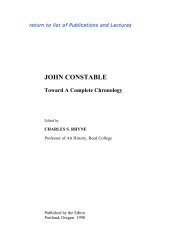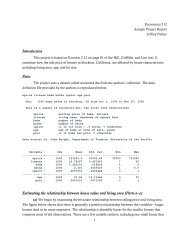Graphic and Photographic Documentation - Reed College
Graphic and Photographic Documentation - Reed College
Graphic and Photographic Documentation - Reed College
Create successful ePaper yourself
Turn your PDF publications into a flip-book with our unique Google optimized e-Paper software.
Mariscal, Fererico E.<br />
Estudio arquitectónico de las ruinas Mayas: Yucatan y Campeche. Contribucion de Mexico<br />
al XXIII Congreso de Americanistas. Secretaría de Educación Pública. Mexico: Talleres<br />
Graficos de la Nacion, 1928.<br />
This was the first publication explicitly arguing the importance of detailed studies of a<br />
wide range of Maya architecture, carefully measured <strong>and</strong> drawn to exact scale, in<br />
order to make possible comparison among similar features at different sites, thereby<br />
establishing a common ground for analysis. Mariscal reviews the significant<br />
contributions of previous scholars, especially those who have carried out detailed<br />
measurements <strong>and</strong> drawings, most notably Charles Holmes, whom he credits with<br />
establishing the basis for such research. However, Mariscal states that they <strong>and</strong><br />
others have not had a sufficient body of this type of comparative information on which<br />
to base their theories.<br />
He argues for continuing studies of this type each year, by Mexican architects <strong>and</strong><br />
architectural students, to build a continually exp<strong>and</strong>ing body of such information for<br />
the pre-Hispanic architecture of their country, which at one point he praises as (in<br />
translation) “not only the most important in America, but also the most notable in the<br />
history of the world” (p. 4).<br />
Mariscal then presents descriptions <strong>and</strong> photographs of 9 Maya sites in the Yucatan<br />
<strong>and</strong> Campeche, with text description, photographs <strong>and</strong> architectural elevations, crosssections,<br />
<strong>and</strong> plans, with measurements, all by the author. A most unusual detail is<br />
that, for each site, he includes the day <strong>and</strong> time at which he arrived <strong>and</strong> left the site;<br />
all in March 1927. No doubt many scholars <strong>and</strong> nearly all editors will consider this<br />
excessive, but the information can be instructive <strong>and</strong> indicates the specificity of his<br />
recording. For Uxmal there are 11 photographs <strong>and</strong> 1 page of measured drawing<br />
(photograph 51 is mislabeled Chichén Itza); for Kabah 4 photographs <strong>and</strong> 2 pages of<br />
measured drawing; for Sayil 6 photographs <strong>and</strong> 1 page of measured drawings; for<br />
Labná there are 14 photographs <strong>and</strong> 2 pages of measured drawings. The text<br />
descriptions include occasional astute observations.<br />
There are 2 brief but especially important final sections, exemplifying the type of<br />
comparative study the author proposes. One section compares doorways, the other<br />
portiocos <strong>and</strong> columns. For each Mariscal provides a page of drawings from various<br />
sites, drawn to scale with measurements, providing comparison of (in translation)<br />
“above all the proportions of these elements that are fundamental in architecture”<br />
(p.101). The page of text accompanying each of these sections presents specific<br />
observations resulting from this comparison.<br />
Regarding doorways, he concludes that (in translation): “it can be noted that, against<br />
what has been affirmed, there is a great variety in the proportions of the Mayan doors:<br />
there are those like that of the Adivino, that form a very beautiful rectangle; there are<br />
those almost square, like that of the Codz-Poop of Kabah; there are those extremely<br />
long, like the interior of Etzna, in Tixmucuy, <strong>and</strong> simply slim, like that of the exterior of<br />
Chacbolay <strong>and</strong> one in Chacmultun; lastly, there are some with inclined jambs, forming<br />
40


